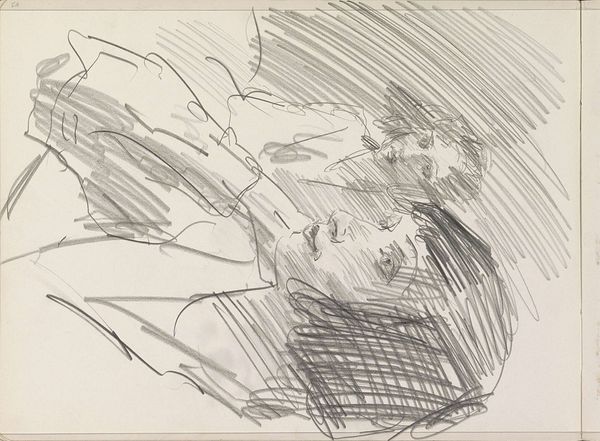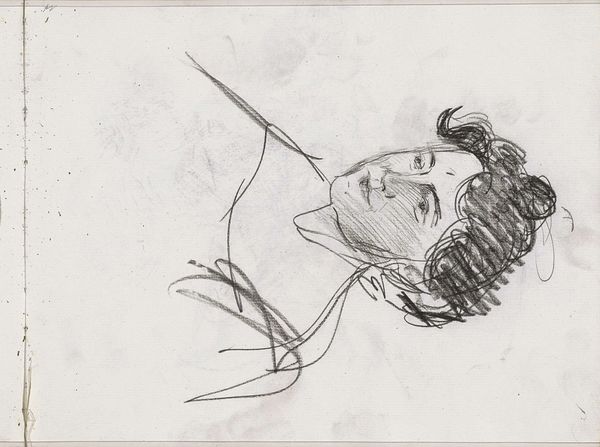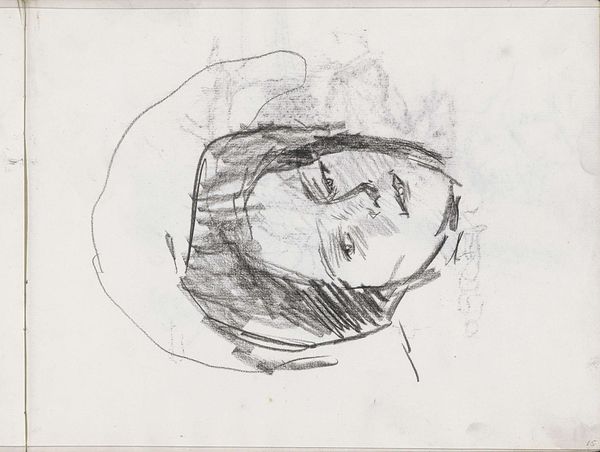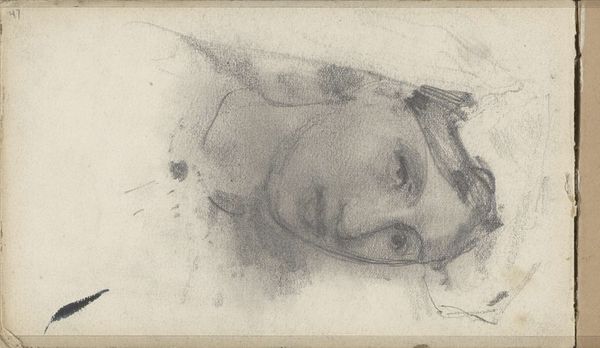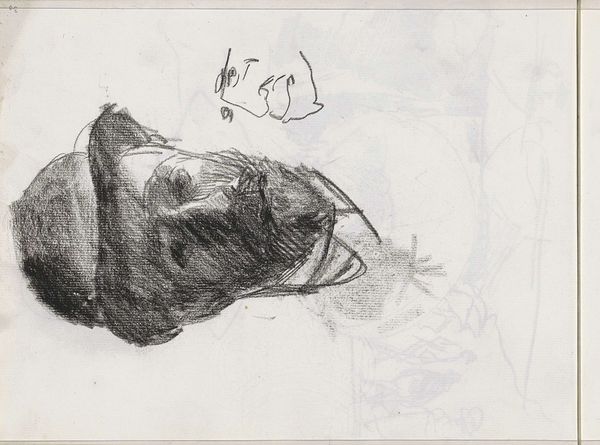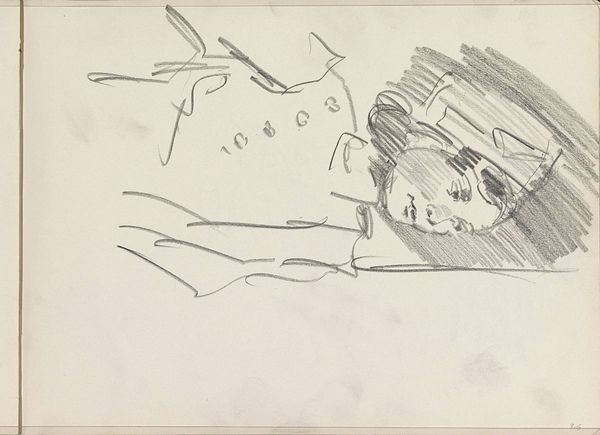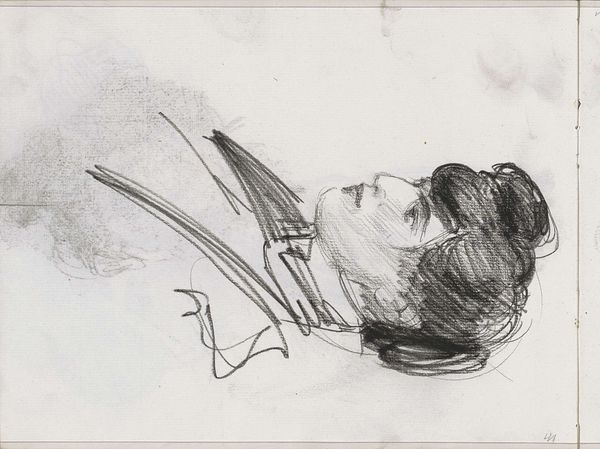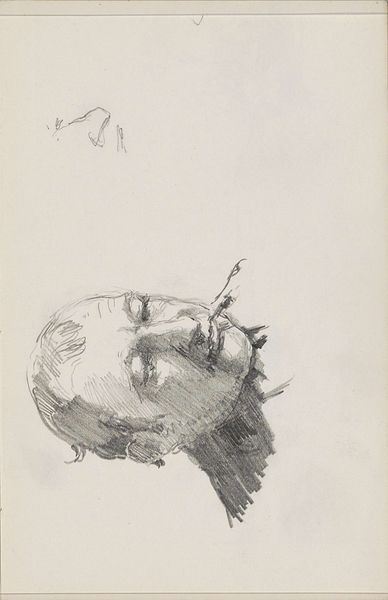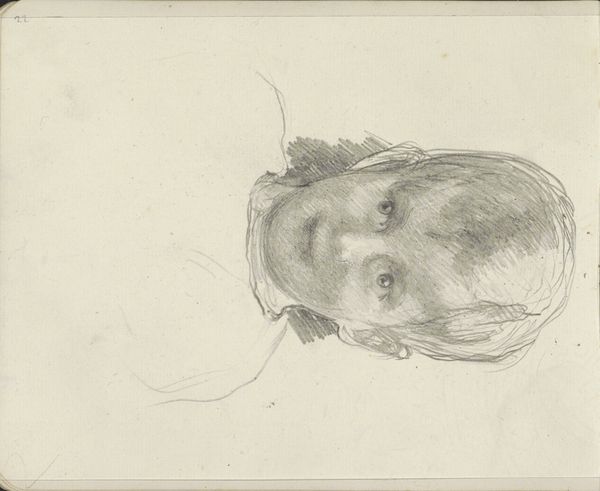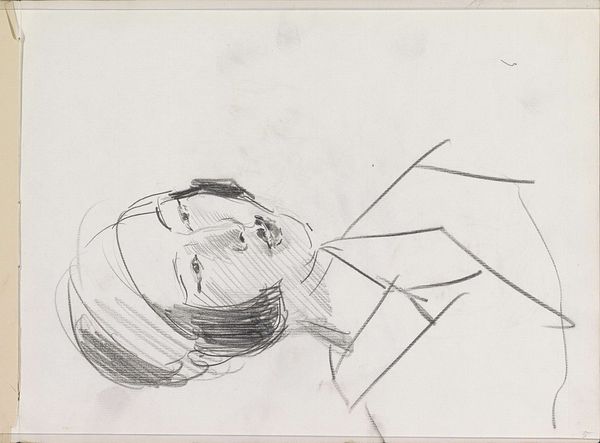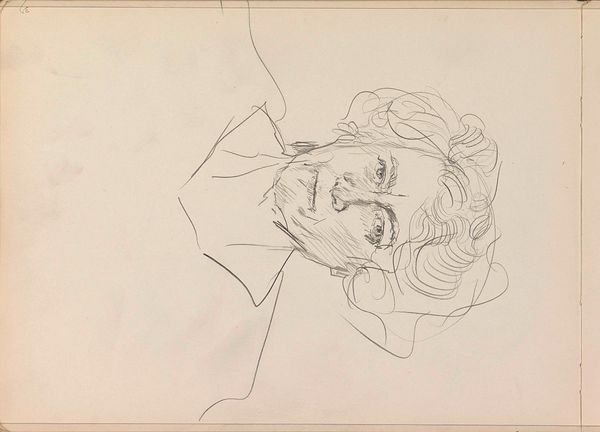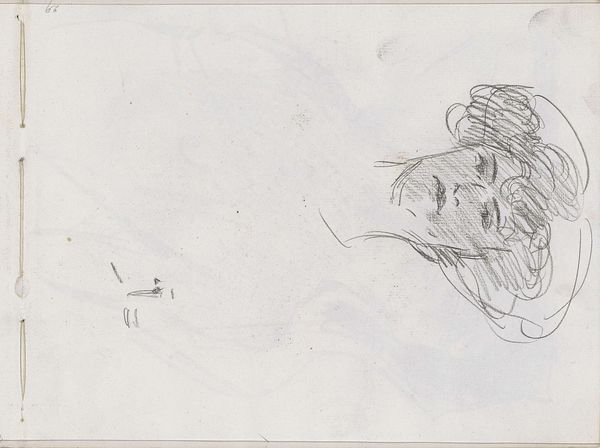
Copyright: Rijks Museum: Open Domain
Curator: Welcome. Before us, we have Isaac Israels's "Vrouwenhoofd," dating from 1875 to 1934. It's currently housed right here at the Rijksmuseum. Executed in pencil, it is an evocative drawing offering us a glimpse into the artist’s process. Editor: There’s such immediacy here. I see the raw energy, the artist capturing a fleeting impression. I find myself filling in the details, inventing her story from the sketch. She feels somehow both familiar and untouchable, don't you think? Curator: It's a testament to Israels's skill that he manages to evoke so much with such a simple medium. Pencil, after all, is an accessible, everyday tool. The economic accessibility of pencil allows broader participation in image production, beyond the confines of formal academic training or wealthy patronage that oil paintings necessitated. Editor: Absolutely, and think about the intimacy of drawing itself. There's no intermediary, just the hand, the pencil, the paper and then the figure. It’s such a direct transmission of feeling and, dare I say, affection. And look at the shadow work beside her head - like a bad thought almost? Curator: I interpret that heavy shadowing as representative of form and mass, certainly, but in the social context, it mirrors the Impressionist project: to break down form, capture fleeting moments of light and shadow, but here with economical utility using just one material instead of paint, pushing at the edges of what drawing could achieve as opposed to only painting.. Editor: I suppose, but doesn't it invite more subjective engagement, prompt more feelings perhaps? I think of whispers and secrets with that darkness so close. And I keep wanting to know who she was – model, lover, stranger? I’m sure a social or artistic type in those circles. Curator: Perhaps we'll never definitively know. However, focusing on Israels's milieu does reveal his engagement with the representation of women and gender. His works and themes show his artistic output took inspiration and took a direct part in these themes with other avant-garde contemporaries. Editor: It remains a stunning and rather haunting encounter on paper. Thank you, Isaac, whoever this captivating 'vrouwenhoofd' may have been. Curator: Indeed. An object offering potent testimony of his craft and the value in the simple everyday art process, revealing broader trends about art-making and accessibility in the late nineteenth and early twentieth centuries.
Comments
No comments
Be the first to comment and join the conversation on the ultimate creative platform.
